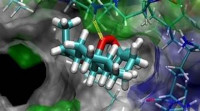Evaluation of Pain-Relieving Effect of The Herbal Remedy “Hoang Ky Que Chi Ngu Vat Thang” in Animal Model http://www.doi.org/10.26538/tjnpr/v7i6.14
Main Article Content
Abstract
Musculoskeletal pain is a significant burden on individuals and society. "Hoang ky que chi ngu vat thang" is a traditional Vietnamese remedy used to treat this condition, but there is a lack of clinical evidence regarding its pain relief mechanism. The objective of this study is to evaluate the analgesic effect of "Hoang ky que chi ngu vat thang" in Swiss mice. The central analgesic effect was evaluated using the hot plate latency test, and the peripheral analgesic effect was evaluated using the writhing test with acetic acid. The results of this study showed that statistically significant differences were observed between the treated groups with "Hoang ky que chi ngu vat
thang" and the standard group 1 and control group (p < 0.05). Furthermore, the number of writhing pain during 25 minutes after acetic acid injection in both groups with dose 14.112 and dose 28.224 was significantly lower (p < 0.01) compared to the reference group (Lysine acetylsalicylate). Conclusively, oral doses of 14.112 g/kg and 28.224 g/kg of "Hoang ky que chi ngu vat thang"
have a good analgesic effect via both central and peripheral analgesic mechanisms.
Downloads
Article Details

This work is licensed under a Creative Commons Attribution-NonCommercial-NoDerivatives 4.0 International License.
References
Hai TN, Canh LG. Chinese nomenclature of holistic remedy (Trung Quốc danh phương toàn tập). 2004.
Tan DP, Phi L. Epidemiology (Phương tễ học). 2010.
Pang B, Zhao TY, Zhao LH. Huangqiguizhi Wuwu Decoction for treating diabetic peripheral neuropathy: a meta- analysis of 16 randomized controlled trials. Neural Regen Res. 2016; 11:1347-1358.
Liang L, Wei X, Feng M, Zhu L, Yu J, Yang G, Yin X, Zhou S, Li K, Yang M, Wang X. Huangqi Guizhi Wuwu Decoction for treating cervical radiculopathy: A systematic review and meta- analysis of randomized controlled trials. Med. (Baltimore). 2020; 99:e19137.
Wang L, Fan Y, Xin P. The efficacy and safety of Huangqi Guizhi Wuwu decoction for rheumatoid arthritis: A protocol for systematic review and meta-analysis. Med. 2020;99(36):e2201.
Deng B, Jia L, Cheng Z. Radix Astragali-based Chinese herbal medicine for oxaliplatin-induced peripheral neuropathy: a systematic review and meta-analysis. Evid Based Complement Alternat Med. 2016; 2016:2421876.
Wang T, Jia Q, Chen T, Yin H, Liang Q. Alleviation of synovial inflammation of juanbi-tang on collagen-induced arthritis and TNF-tg mice model. Front Pharmacol. 2020;11:45.
Chien M, Chuang, C, Lin Y, Yang C, Chen C. Analgesic and anti-inflammatory effects of herbal mixture extracts in mice. Pharmacol Pharm. 2018; 9:1-9.
Koster R, Anderson M, Debeer F. Acetic acid for analgetic screening. Fed Proc. 1959; 18:412-417.
Woolfe G, Macdonald AD. The evaluation of the analgesic action of pethidine hydrochloride (demerol). J. Pharmacol Exp Ther. 1944; 80:300-307.
Rezq S. Anti-Inflammatory, antipyretic, and analgesic properties of Potamogeton perfoliatus Extract: in vitro and in vivo study. Molecules 26. 2021; 26:4826.
Li Y, Cui HJ, Huang JC, Wu XQ. Clinical study of Jiawei Huangqi Guizhi Wuwu Decoction in preventing and treating peripheral neuro-sensory toxicity caused by oxaliplatin. Chin J. Integr Med. 2006; 12:19-23.
Wang Y, Liu Y, Xi Z, Yu Y, Liu L. A multicenter, randomized, double-blind, placebo-controlled trial evaluating the efficacy and safety of Huangqi Guizhi Wuwutang granule in patients with rheumatoid arthritis. Med. 2019; 98:e14888.
An Y. The usage of biological dmards and clinical remission of rheumatoid arthritis in China: A real-world large scale study. Clin Rheumatol. 2017; 36:35-43.
Administration of Science Technology and Training (Vietnam). Decision No. 141/QD-K2ĐT on guidelines for pre-clinical and clinical trials of traditional and herbal medicines (Tài liệu chuyên môn “hướng dẫn thử nghiệm tiền lâm sàng và lâm sàng thuốc đông y, thuốc từ dược liệu”).
Lam DT. Research on safety, anti-inflammatory and analgesic effects of cypress extract on experimental and clinical rheumatoid arthritis. 2017.
Wang Y, Chen T, Yang C. Huangqi Guizhi Wuwu decoction improves arthritis and pathological damage of heart and lungin TNF-Tg Mice. Front Pharmacol. 2022; 13:e14888.
Tran YH, Nguyen TTT, Nguyen PT, Nguyen KT, Duong CX, Tran HM. Effects of Ganoderma Lucidum extract on morphineinduced addiction and memory impairment in mice. Biointerface Res Appl Chem. 2022; 12(1):1076-1084.
Abdullahi I D, Yaro A H, Nazifi A B. Preliminary Studies on the Anti-Inflammatory and Analgesic Effects of Methanol Leaf Extract of Ficus asperifolia Miq. Trop J. Nat Prod Res. 2020; 4(3):85-90.
Thu Thuy L, Anh Tuan P, Hoang Ngan N, Minh Hoang L. The study of the anti-inflammatory effect of herbal remedy “Quyen ty thang gia giam” in animal model (Đánh giá tác dụng chống viêm cấp của bài thuốc quyên tý thang gia giảm trên mô hình gây phù chân chuột bằng carrageenin). Vietnam Med J. (Tạp chí Y học Việt Nam). 2022; 519(2):30-34.
Koster R, Anderson M, De Beer EJ. Acetic acid for analgetic screening. Fed Proc. 1959; 18:412.
Woolfe G, Macdonald AD. The evaluation of the analgesic action of pethidine hydrochloride (demerol). J. Pharmacol Exp Ther. 1944; 80:300-307.


